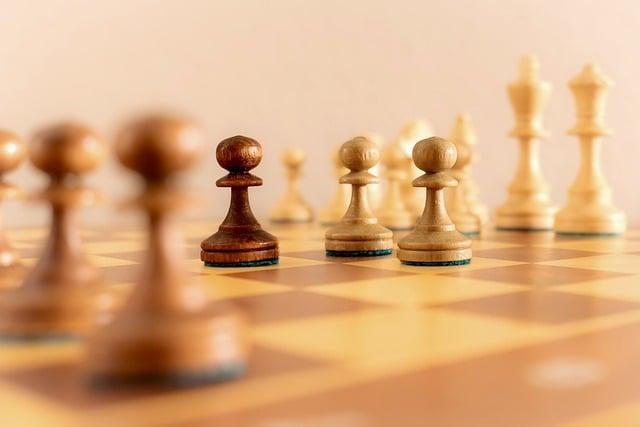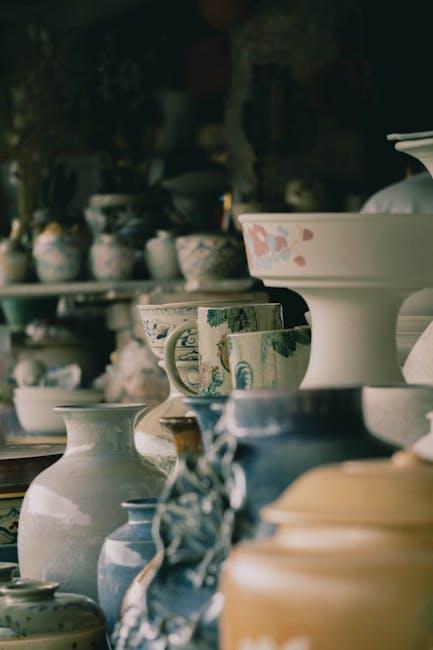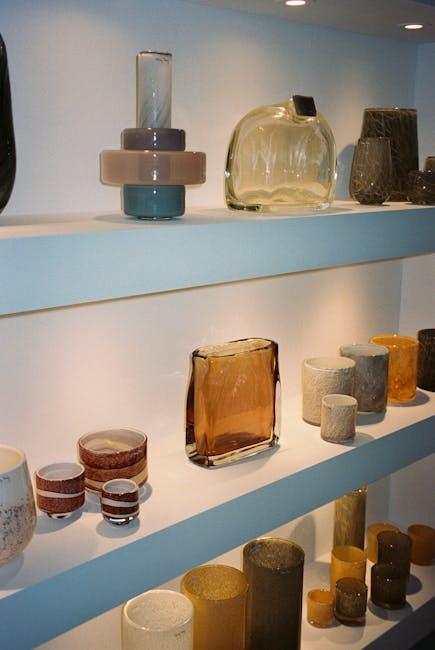In the realm of luxury living, the art adorning one’s home is more than mere decoration; it is a testament to personal taste, cultural awareness, and investment acumen. Curating a private art collection is an intricate endeavor that marries aesthetic sensibility with strategic foresight. As the art market continues to evolve, the discerning collector must navigate a landscape rich with opportunity yet fraught with complexity. This article delves into the nuanced process of assembling a private art collection tailored for the luxury home, offering a detailed roadmap that blends artistic passion with financial prudence. Whether you are an experienced connoisseur or a novice enthusiast, understanding the mechanics of art acquisition and display will empower you to create a collection that not only enhances your living space but also serves as a reflection of your unique identity and sophistication.
Curating Your Collection Understanding Art Movements and Styles
Building a sophisticated art collection begins with a deep dive into the rich tapestry of art movements and styles. From the evocative brushstrokes of Impressionism to the bold abstractions of Modernism, each movement offers a unique lens through which to view the world. Understanding these styles is crucial for selecting pieces that not only resonate with your personal taste but also complement the aesthetic of your luxury home. Consider exploring the following art movements:
- Impressionism: Celebrated for its focus on light and movement, capturing fleeting moments with a vibrant palette.
- Surrealism: A gateway to the subconscious, this style is known for its dream-like visuals and unexpected juxtapositions.
- Cubism: A revolutionary approach to perspective, breaking subjects into geometric shapes to depict multiple viewpoints.
- Contemporary Art: Encompasses diverse styles and themes, often challenging traditional boundaries and provoking thought.
By immersing yourself in these movements, you not only enhance your collection’s value but also cultivate an environment that reflects a profound appreciation for art’s evolution. As you curate, think beyond the aesthetic appeal; consider the historical context and cultural significance of each piece to create a collection that is both timeless and visionary.

Identifying Authentic Pieces Evaluating Provenance and Artist Reputation
When curating a private art collection, discerning the authenticity of a piece is paramount. The journey begins with a thorough evaluation of the artwork’s provenance, which provides a documented history of its ownership. Provenance is not just a pedigree; it’s a testament to the artwork’s journey and authenticity. Scrutinize documents such as sales receipts, exhibition catalogs, and certificates of authenticity. These records should establish a clear, traceable lineage back to the artist or their immediate circle.
Equally critical is assessing the artist’s reputation. A well-regarded artist not only enhances the cultural value of your collection but also its financial worth. Consider the following factors when evaluating an artist’s standing:
- Exhibition History: Artists who have exhibited in prestigious galleries and museums often have a more substantial reputation.
- Critical Acclaim: Look for reviews and articles in reputable art publications.
- Market Performance: Analyze auction results and sale prices to gauge market interest and stability.
- Awards and Honors: Recognition from esteemed art institutions can significantly bolster an artist’s credibility.
By meticulously assessing both provenance and the artist’s reputation, you can ensure that your collection is not only authentic but also a wise investment.

Strategic Acquisitions Balancing Investment Potential with Personal Taste
Building a private art collection that complements the grandeur of a luxury home involves a delicate balance between investment potential and personal aesthetic. While the allure of acquiring high-value pieces is undeniable, the collection should also resonate with your personal taste, creating an environment that feels both exclusive and intimate. To achieve this, consider the following strategic approaches:
- Research the Market: Stay informed about current trends and emerging artists. Understanding the market dynamics will help you identify works with the potential for appreciation.
- Define Your Aesthetic: Identify themes or styles that speak to you. Whether it’s contemporary, classical, or abstract, aligning your collection with your personal preferences ensures a cohesive visual narrative.
- Consult with Experts: Engaging with art consultants or gallery curators can provide valuable insights and access to exclusive pieces that might not be available to the general public.
- Consider Provenance and Authenticity: Ensure that each piece has a clear history and is authenticated, as this not only affects the piece’s value but also its story within your collection.
By weaving together these elements, your collection can become a dynamic expression of both your personal taste and investment acumen, transforming your home into a sanctuary of art that is both valuable and personally significant.

Displaying Art with Elegance Integrating Pieces into Your Home’s Aesthetic
Incorporating art into your home’s interior design is more than just placing a painting on a wall; it is about creating a harmonious dialogue between the art and the surrounding environment. To achieve this, consider the following strategies:
- Balance and Proportion: Ensure that the scale of the artwork complements the room. Large, bold pieces can become focal points in spacious areas, while smaller, intricate artworks might find their place in more intimate settings.
- Color Coordination: Select pieces that either complement or contrast with the existing color palette. Art can be used to echo accent colors or introduce new hues to refresh the space.
- Layered Textures: Mix different media and styles to add depth and dimension. Combine oil paintings with sculptures or prints to create visual interest and a tactile experience.
- Lighting: Illuminate your art effectively to highlight its details and create ambiance. Use adjustable lighting to focus on key pieces, enhancing their impact.
By thoughtfully curating and displaying your art collection, you not only elevate your home’s aesthetic but also create a personal sanctuary that reflects your taste and sophistication.



